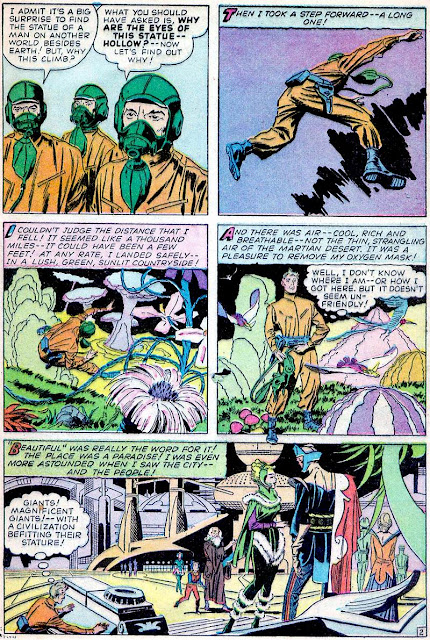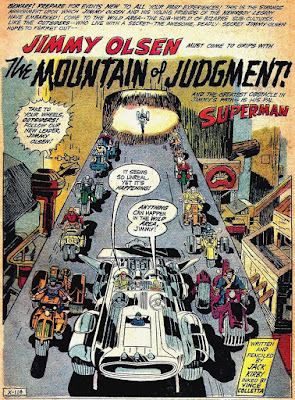Back before the Space Race triggered a cosmic ray incident, Jack Kirby was already involved in the action.
Joe Simon launched Race For The Moon in 1958 at Harvey Comics with the help of Bob Powell. Kirby provided "5" stories each for issues two and three. Besides the fun of seeing Kirby drawing space race era science fiction, this title also marked the first time that Al Williamson worked with The King. Williamson's inks are particularly well suited to the genre, though his style seems to lightly conflict with the pencils at times - inevitable with two distinctive styles finding their best blend.
You may have noted the quotes around the above number of stories that appear in these two issues. That's because i don't quite agree with the official story count. If one actually looks at the books, you'll find that two of those ten stories look like this:
The more astute among you may have already discerned that this is not a story, but rather a table of contents. Nonetheless, it's usually credited as a one page 'story'. The first story is the intriguingly titled...
Next up was...
Lunar Trap took place on a moon with both American & Soviet space colonies, a basic can't-we-all-get-along tale that left me thinking of Moon Zero Two.
That was followed by the cover story - the cover being just a rework of the first panel...
It turns out that poor old Bill had a thing about the red spot on Jupiter.... always felt it was watching him. The cover, as you may have noticed, rather obscures the whole notion of Jupiter and the red spot.Odd since that's the story focus.
For our fourth & final tale, we get one of the first pop culture mentions of a phenomenon that would get culturally noticed decades later -
Kirby & Williamson drew one more issue, and then the book was cancelled. Harvey turned its attentions fully to the Funny Animal market and Simon & Kirby moved on.
all pages by Jack Kirby and Al Williamson from Race For The Moon #2 (1958)





















































